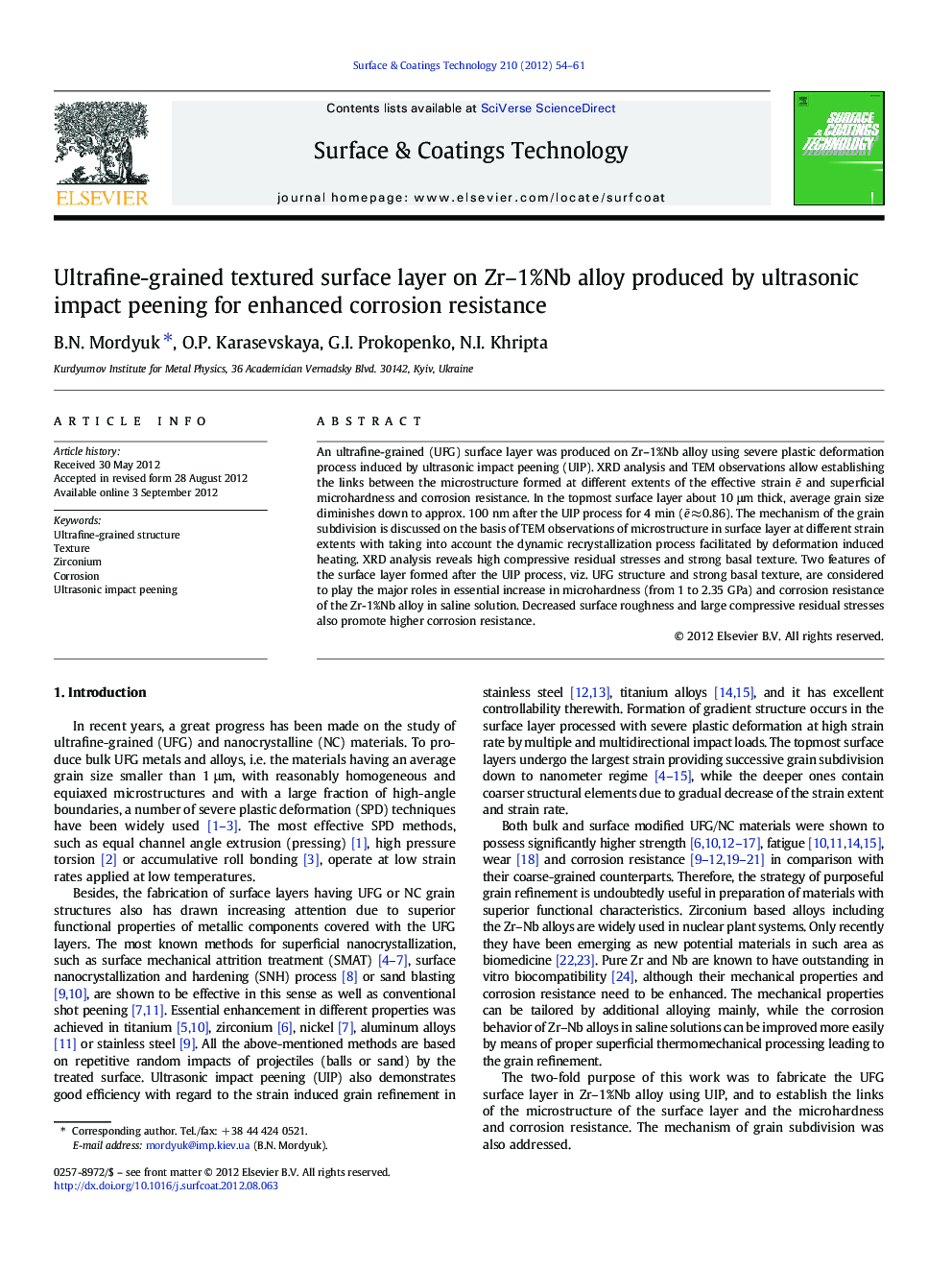| Article ID | Journal | Published Year | Pages | File Type |
|---|---|---|---|---|
| 1658282 | Surface and Coatings Technology | 2012 | 8 Pages |
An ultrafine-grained (UFG) surface layer was produced on Zr–1%Nb alloy using severe plastic deformation process induced by ultrasonic impact peening (UIP). XRD analysis and TEM observations allow establishing the links between the microstructure formed at different extents of the effective strain ē and superficial microhardness and corrosion resistance. In the topmost surface layer about 10 μm thick, average grain size diminishes down to approx. 100 nm after the UIP process for 4 min (ē ≈ 0.86). The mechanism of the grain subdivision is discussed on the basis of TEM observations of microstructure in surface layer at different strain extents with taking into account the dynamic recrystallization process facilitated by deformation induced heating. XRD analysis reveals high compressive residual stresses and strong basal texture. Two features of the surface layer formed after the UIP process, viz. UFG structure and strong basal texture, are considered to play the major roles in essential increase in microhardness (from 1 to 2.35 GPa) and corrosion resistance of the Zr-1%Nb alloy in saline solution. Decreased surface roughness and large compressive residual stresses also promote higher corrosion resistance.
► An ultrafine-grained surface layer with strong basal texture is produced on Zr–1%Nb alloy by UIP. ► Structural evolution in thin surface layer according to the ongoing straining and deformation heating. ► Decreased surface roughness and large compressive stresses promote higher corrosion resistance. ► Broadening of passivity region due to formation of protective monoclinic and tetragonal Zr2O films. ► Combined effects of UFG structure and basal texture increase microhardness and corrosion resistance.
